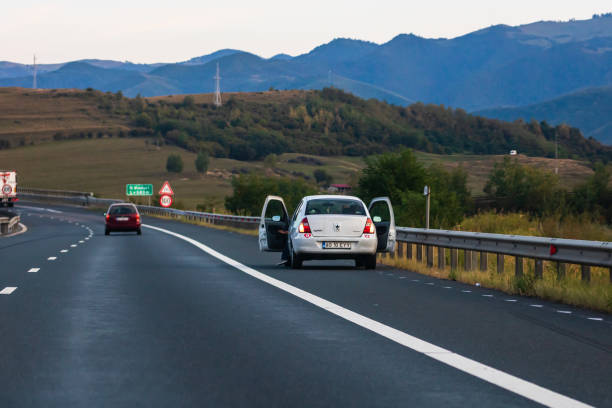Few situations are as nerve-wracking as having your vehicle suddenly break down in the middle of a busy highway. With cars rushing by at high speeds and limited room to maneuver, it’s crucial to know what steps to take to keep yourself and others safe.
Whether your car stalls due to engine trouble, a flat tire, or a fuel issue, staying calm and reacting smartly can make all the difference. Here’s a step-by-step guide on what to do if your vehicle stops on the highway.
1. Don’t Panic – Stay Calm and Focused
The first thing to remember is: don’t panic. A sudden breakdown is stressful, but keeping a clear head will help you make safer decisions. Turn down your music, take a deep breath, and prepare to act quickly and carefully.
2. Turn on Your Hazard Lights Immediately
As soon as you realize there’s a problem, turn on your hazard lights. This alerts other drivers that your car is experiencing an issue, even before you come to a full stop. The flashing lights increase your visibility, especially in low light or bad weather conditions.
3. Move to the Shoulder or Safe Area—If Possible
If your car is still moving, steer it as far off the road as you can, ideally onto the right-hand shoulder. Avoid the left lane unless you’re near a left-side breakdown lane, and never stop in a travel lane unless absolutely necessary.
Use your momentum to get out of harm’s way. If your vehicle is completely disabled in the middle of traffic, turn your wheels toward the edge of the road (to avoid being pushed into traffic in a rear-end collision) and stay inside the vehicle until it’s safe to exit.
4. Stay Inside the Vehicle Unless It’s Unsafe
Many people’s first instinct is to get out and assess the damage—but on a highway, this can be extremely dangerous. Unless you’re in immediate danger (like smoke or fire), it’s usually safer to stay inside the car with your seatbelt on.
Exiting the vehicle puts you at risk of being struck by high-speed traffic. If you must exit—for example, if you’re in an active lane—do so carefully and from the side away from traffic.
5. Call for Help
Once you’re safely off the road and stopped, call for roadside assistance. If you don’t have a service like AAA, many states have highway patrol or DOT programs that assist stranded motorists. In Texas, for example, there’s the “Highway Emergency Response Operator (HERO)” program.
If you’re in danger or blocking traffic, call 911 and clearly state your location (look for highway mile markers or exit signs) and the nature of the problem.
6. Make Your Vehicle Visible
If you have them, set up reflective triangles or road flares behind your car to alert approaching traffic. Place them at least 10–20 feet behind your vehicle, farther if possible. This is especially important at night or during poor visibility conditions.
Opening the hood can also signal to other drivers and law enforcement that your car is disabled and not just parked.
7. Wait for Help in a Safe Spot
If you’re off the roadway and inside the car, keep the doors locked and windows up while you wait. Turn on the interior light at night so you’re more visible.
Avoid accepting help from strangers unless it’s an official responder or police officer. If someone does stop to assist, crack the window slightly to communicate and wait for professional help to arrive.
8. Avoid Trying to Fix the Problem on the Highway
Even if you’re mechanically inclined, the highway isn’t the place to fix your vehicle—especially if you’re near moving traffic. Changing a tire, checking under the hood, or inspecting damage puts you at serious risk.
It’s safer to have your vehicle towed to a nearby repair shop or wait for roadside assistance to do any necessary work in a safe location.
9. Know What to Do If You Can’t Pull Over
If your car stalls and won’t move—and you’re in a lane—this is a serious emergency. Turn on your hazard lights, stay in your vehicle, and call 911 immediately. Do not attempt to push your car across lanes unless instructed and protected by emergency services.
10. Be Prepared for Next Time
Preparation is key. Consider keeping the following items in your car:
- Reflective warning triangles or road flares
- A flashlight with extra batteries
- A fully charged portable phone charger
- Bottled water
- A basic first-aid kit
- Emergency contact numbers (including roadside assistance)
These tools can make a tough situation easier and safer.
Final Thoughts
Breaking down on the highway is never convenient, but knowing what to do can protect you and others from harm. Turn on your hazards, move off the road, stay inside, and call for help. Avoid unnecessary risks by staying put until professional assistance arrives.
With preparation, patience, and a calm approach, you’ll get through the situation safely—and be back on the road in no time.

